SEO, or Search Engine Optimization, is the practice of enhancing a website’s visibility on search engines like Google. By optimizing both content and technical aspects, businesses can improve their chances of ranking higher in search results. This is where SEO Basics play a crucial role, enabling brands to strengthen their online presence and attract organic traffic.
At OctopusWriters, we recognize the importance of building a strong SEO foundation. That’s why we’ve created this guide to break down the fundamentals of SEO for beginners, offering clear and actionable advice. Whether you’re just starting or looking to enhance your SEO strategy, we encourage you to explore our comprehensive guide and get on the path to SEO success with OctopusWriters.
What are the SEO basics?
Some essential SEO Basics include keyword research, on-page optimization, link building, and content creation.
On-page SEO involves optimizing individual pages on your website to enhance their search engine friendliness, ensuring they rank better for relevant searches.
Link building focuses on building relationships with other websites to boost the number and quality of backlinks to your site, which improves its authority and search rankings.
Lastly, content creation is about producing high-quality, original content that resonates with your target audience. By including relevant keywords and phrases, you can increase the visibility and relevance of your content to search engines, making it a critical part of SEO Basics.

Is SEO Basics helpful?
Type of SEO Basics
Understanding the foundational vocabulary of SEO Basics is essential. Let’s explore some key terms:
- Search Engine Optimization (SEO): Refers to the tactics used to optimize your website, ensuring it provides the high-quality information that searchers are looking for. Effective SEO also helps your site rank higher in search results for specific keywords, making it easier for people to find your content.
- On-page SEO: Involves any optimizations made directly on your website that enhance search rankings, such as the keywords used in your content and back-end elements like site structure.
- Off-page SEO: Encompasses actions taken outside of your website to improve search engine rankings, including acquiring backlinks from other reputable sites.
- Link Building: The process of obtaining links to your website from high-quality sources, which helps build authority and credibility.
- SERPs: Search Engine Results Pages are the pages displayed when you perform a search on Google or any other search engine.
- White-hat SEO: Refers to optimization tactics that adhere to accepted best practices and ethical guidelines.
- Black-hat SEO: Involves manipulation of search engine algorithms through unethical tactics to achieve higher rankings in SERPs.
- E-E-A-T: Stands for Experience, Expertise, Authoritativeness, and Trust. This concept is part of Google’s search quality rater guidelines and plays a crucial role in determining a page’s relevance and authority.
- Keyword: The words or phrases that users input into search engines to find content related to their queries. Incorporating relevant keywords that align with search intent is crucial for SEO Basics.
- Keyword Research: The process of identifying keywords that users enter in search engines relevant to your business, helping you determine which words to use on your website pages and in your content.
- Organic/Organic Results: These are unpaid results that appear in SERPs due to a page’s relevance to a particular search query.
- Organic Traffic: Refers to the visitors that arrive at your site through organic search results.
- Rank/Page Ranking: Indicates the position of your site in SERPs for a specific keyword.
- Ranking Factor: An element that influences where your site appears in search results, such as page authority.
- Search Intent: The reason behind a user’s search, which is critical for aligning your content with user needs.
Familiarizing yourself with these terms will strengthen your grasp of SEO Basics, helping you implement effective strategies to enhance your online presence.
Why Is SEO Basics Important?
There are three key reasons why mastering the SEO Basics is essential:
Drive More Traffic to Your Website
At any given moment, billions of people are using search engines to seek information. In fact, Google processes approximately 4.9 billion searches every minute.
Enhancing your website’s visibility on search engines can significantly increase your reach to potential customers, driving more traffic to your site. Our analysis of over four million Google search results confirms this. It shows that the first organic search result captures 27.6% of all clicks, with the percentage decreasing to 15.8% for the second result and 11% for the third, and so forth.
Here’s a complete breakdown of click-through rates (CTR) for organic results on Google’s first page. However, remember that attracting more visitors isn’t the only factor contributing to business growth. The quality of the traffic and how you engage visitors once they arrive are crucial in converting them into customers.
Increase Brand Awareness

SEO Basics helps your brand succeed more easily
SEO can elevate your business’s profile among potential customers who may not be familiar with your brand yet.
When your website appears in search results, it introduces your brand to those searching for related information. Each time your site is displayed, it reinforces brand recognition in the minds of potential customers.
To maximize this exposure, focus on creating high-quality, valuable content that genuinely assists your visitors. When your content is helpful and informative, it builds trust and positions your brand as an authority in your field. This trust makes visitors more likely to remember your brand and consider purchasing from you in the future. Overall, SEO Basics not only enhance your brand’s visibility but also foster trust and credibility by making valuable content easier to discover.
Improve User Experience on Your Site
Optimizing your site for search engines also enhances the overall user experience.
This includes focusing on critical website elements that contribute to usability, such as loading speed, navigation ease, and mobile-friendliness. A positive user experience encourages visitors to stay longer and increases the likelihood of making a purchase.
Therefore, it’s essential to publish high-quality content that is enjoyable to consume on a fast-loading, secure, and mobile-friendly site. By mastering the SEO Basics, you not only improve your site’s rankings but also create a more pleasant experience for your users.
SEO 101: Ensuring Google Can Index Your Site
A fundamental aspect of SEO Basics is ensuring that Google can crawl and index your site. If Google cannot properly index a page, that page won’t appear in search engine results pages (SERPs). While there are certain pages, like order confirmation pages, that don’t need to be indexed, any page you want to rank should be indexed to appear in search results.
The best way to check this is by using Google Search Console, a free tool that helps you monitor and maintain your website’s presence in Google search results.
Once you’ve set up Google Search Console, head to the Indexing report. If a URL isn’t indexed, the tool can tell you why, allowing you to fix any crawlability issues. One effective solution to improve crawlability is creating an XML sitemap, which acts as a roadmap for search engines, helping them understand your site’s structure.
How you create a sitemap depends on the content management system (CMS) your site is built on, such as WordPress or Shopify. After creating the sitemap, submit it through the “Sitemaps” section in Google Search Console.
For more details on what you can do with this tool, you can refer to our complete guide on Google Search Console. Now, let’s dive into one of the most essential SEO Basics.
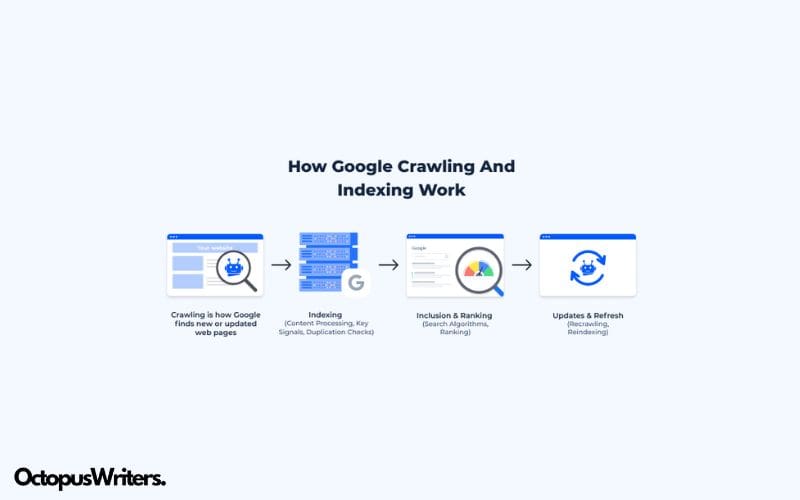
SEO Basics – Don’t Forget Google Search Console
Keyword Research
One of the foundations of SEO Basics is keyword research, which involves identifying the most relevant and valuable keywords for your business. For instance, if you operate a backyard-related website, you’d want to rank for phrases like “best pergola covers.” By integrating targeted keywords into your site’s content, you improve your chances of appearing in search results, increasing visibility and driving potential customers to your business.
Key Terminology in Keyword Research
Understanding key terms is critical for mastering SEO Basics.
Seed Keywords: These are broad, fundamental terms related to your business or industry. They form the starting point for your keyword research. For example, a company selling video editing software might use “video marketing” as a seed keyword.
Monthly Search Volume: This measures how many times a keyword is searched each month on search engines. For instance, tools can display search volumes for specific regions or globally.
Keyword Difficulty (KD%): A metric that shows how difficult it would be to rank in the top 10 search results for a given keyword.
Search Intent: This refers to the underlying purpose of a search query, whether it’s informational, commercial, navigational, or transactional.

Keywords are essential for successful SEO
Effective Keyword Research Techniques
Using a keyword research tool is an essential step in SEO Basics. These tools allow you to discover and analyze keywords based on seed terms. By utilizing massive databases of keywords, they offer insights like search volume, KD%, and search intent. You can also filter keywords to find the ones that best align with your business goals.
Start by inputting seed keywords into the tool. These foundational keywords should be relevant to your industry, product, or service. For instance, if your business sells video editing software, “video marketing” could be a useful seed keyword.
To identify seed keywords:
- Brainstorm terms your customers might use.
- Analyze competitors to see which keywords they target.
- Use common industry terms that are widely recognized.
Once you’ve established your seed keywords, you can use tools like Semrush’s Keyword Magic Tool to expand your list and gather valuable data, such as search volume, keyword difficulty, and search intent.
Identifying Low-Competition, High-Volume Keywords
In SEO Basics, it’s essential to target low-competition, high-volume keywords—keywords with substantial monthly searches but lower competition. These are easier to rank for and can bring more traffic to your site.
For example, the keyword “excel formula generator” has a search volume of 5.4K in the US and 13.9K globally, with a low KD% of just 22%. This makes it a great opportunity for ranking.
To find such keywords, adjust the filters in your keyword research tool. Set the volume filter to a minimum of 1,000 searches per month and choose keywords with “Easy” or “Very Easy” keyword difficulty percentages.
Competitor Keyword Analysis
Another crucial aspect of SEO Basics is finding keywords your competitors are targeting but you aren’t. This opens up new opportunities for your business to grow its market share. Tools like Semrush’s Keyword Gap allow you to compare your keyword profile against competitors. Simply input your website URL and up to four competitor URLs, and the tool will reveal keywords you’re missing or rank lower for.
By focusing on these “Missing” keywords, you can identify gaps in your strategy and improve your SEO performance.
On-Page SEO Basics
To improve your SEO basics, focus on on-page SEO elements by using tools to identify key areas that need optimization. Utilize a search bar in your SEO audit tool to filter results based on specific elements like “title tag,” “meta description,” or “H1 tag.” This allows you to pinpoint areas that may impact your website’s on-page SEO performance and fix them accordingly.
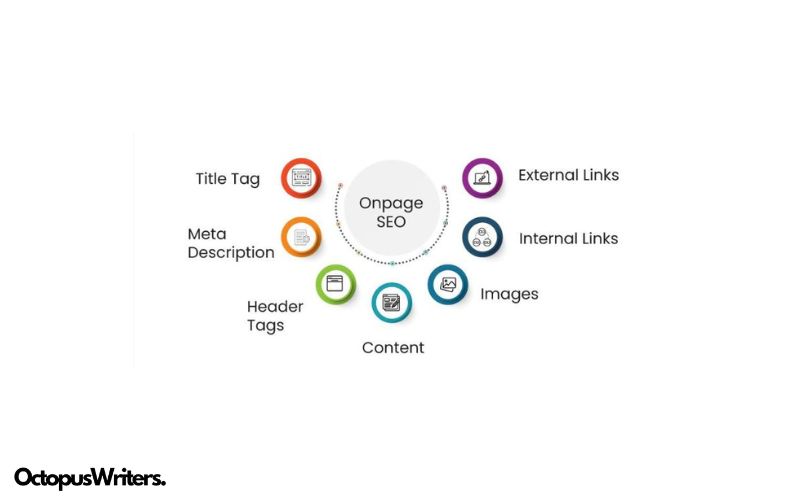
SEO Basics don’t forget SEO On-page
Create Content Aligned with Search Intent
Understanding search intent is essential for SEO basics. Google prioritizes providing users with the most relevant content, so it’s important to ensure your content matches the intent behind each keyword. There are four main types of search intent:
- Informational: Users are looking for knowledge (e.g., “what is influencer marketing”).
- Navigational: Users want to reach a specific website (e.g., “amazon”).
- Transactional: Users are ready to make a purchase (e.g., “buy website domain”).
- Commercial: Users are comparing products before making a decision (e.g., “best influencer marketing tools”).
For example, if you’re targeting the keyword “best video editors,” you should focus on listing and reviewing top video editing software, as this matches the commercial intent of users looking for options rather than a basic explanation.
SEO tools like Semrush and Backlinko can help identify the search intent behind keywords, giving you a clear direction to create content that resonates with users’ needs.
Optimize Key On-Page SEO Elements
Effective on-page SEO basics involve optimizing essential elements like title tags, meta descriptions, H1 tags, and alt text. These components play a crucial role in helping search engines understand your content while enhancing user experience by providing clear, descriptive information about what each page contains.
For further insights, explore our detailed guide on how to optimize on-page SEO elements to boost your website’s performance and rankings.
Technical SEO Basics
Technical SEO is a core part of SEO basics that focuses on enhancing your website’s technical structure. This ensures a smooth user experience while making it easier for search engines to crawl, understand, and index your content.
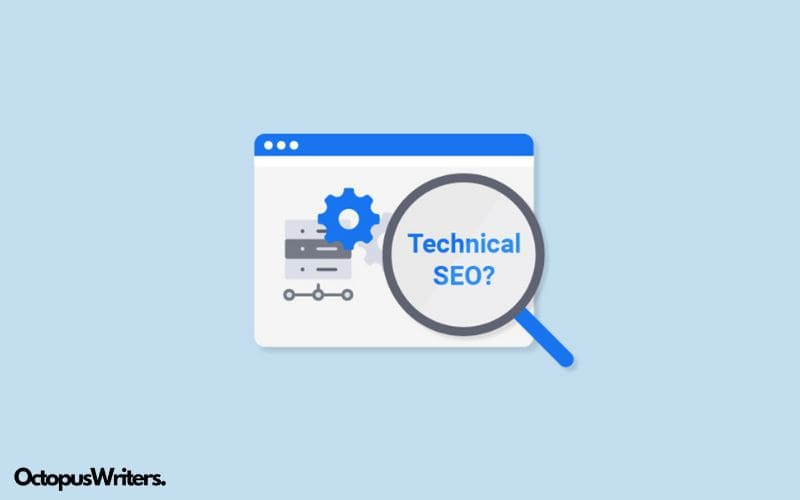
What does Technical SEO include?
Key Terminology in SEO Basics
Crawlability: This refers to the ability of search engine bots to navigate your site. Ensuring good crawlability means that search engines can discover all your web pages.
Indexability: This determines whether a page can be stored in a search engine’s index, making it eligible to appear in search results.
HTTPS: A secure protocol for data exchange between the browser and website. Implementing HTTPS is crucial as it’s a known ranking factor in SEO basics.
Technical Tactics for Success
Improve Crawlability and Indexability For your website to appear in search results, it’s essential that search engines can easily crawl and index your pages. Address any issues that affect this process immediately. To enhance indexation, create an XML sitemap using a tool like XML Sitemaps Generator. Upload this sitemap to your root directory and submit it via Google Search Console (GSC) for better results.
Boost Page Speed Page speed is another key element in SEO basics, directly affecting both user experience and search rankings. Google measures page speed using Core Web Vitals, which include:
- Largest Contentful Paint (LCP): How fast the main content loads.
- Interaction to Next Paint (INP): The time it takes for visual feedback after user interaction.
- Cumulative Layout Shift (CLS): How often users experience unexpected layout changes.
Use tools like Site Audit to analyze and improve your website’s speed. Review Core Web Vitals and apply the suggested improvements for a faster-loading site.
Secure Your Site with HTTPS HTTPS is crucial for SEO basics, as a secure connection impacts your rankings. If your website uses HTTPS, you’ll see “Connection is secure” in the browser. To enable HTTPS, obtain an SSL or TLS certificate. Use Site Audit to find and resolve any issues with your HTTPS setup, ensuring your website is secure.
Optimize for Mobile Devices Mobile optimization is a crucial part of SEO basics, as Google uses mobile-first indexing. A mobile-friendly design ensures your site performs well on search engine results pages (SERPs). To optimize your website for mobile, consider using responsive design or mobile-friendly themes. Tools like Site Audit can help you detect and address any mobile-related issues to enhance performance on mobile devices.
By mastering these SEO basics, you can ensure your website is technically sound, which can help improve rankings and user experience.
Off-Page SEO Basics
Off-page SEO Basics focuses on enhancing a website’s search engine visibility through actions that occur outside the website itself. This involves engaging in activities that earn backlinks and mentions from reputable external websites, which can significantly improve a site’s ranking.
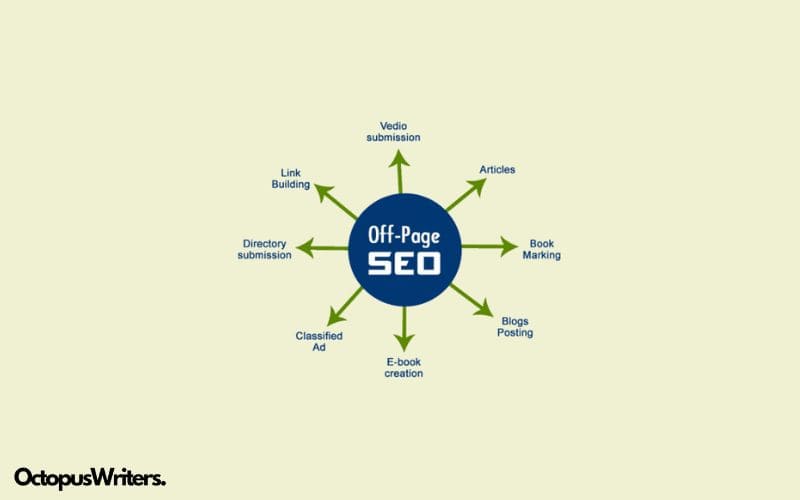
What is Off Page SEO?
SEO Basics Terminology for Off-Page SEO
Backlinks: Links from external sites that direct back to your website. Search engines consider these a vital ranking factor, as they show that your content is valuable and trusted by other websites.
Off-Page SEO Tactics
Earn Backlinks from Authoritative Websites
The higher the number of backlinks your page gets from reputable websites, the better your chances of ranking higher in search engine results pages (SERPs).
In SEO Basics, backlinks serve as votes of confidence for search engines like Google, indicating that a high-authority website finds your content valuable. When a reputable site links to your page, it’s essentially vouching for your content’s relevance and quality.
To earn these valuable backlinks, you must provide content that offers clear value. Other websites link to your content for several reasons:
- Quality Content: Well-researched, insightful, and unique content, such as infographics, research reports, or eBooks, is more likely to earn backlinks. Websites prefer linking to resources that offer reliable information.
- Expertise and Authority: Sites are more inclined to link to authoritative sources within a specific industry or niche.
- Mutual Benefit: Partnerships or collaborations can also result in backlinks, such as guest posts where you link back to your website.
If you’re new to SEO Basics for link building, analyzing competitors’ backlinks is a good starting point. By studying which sites link to them, what kind of content gets linked, and the context of those links, you can shape your own backlink strategy. Tools like Semrush’s Backlink Analytics can help you explore your competitors’ backlink profiles.
Simply enter your competitor’s website URL in Semrush, and you’ll see detailed data about where their backlinks come from and how they’re earned. Use this information to identify high-authority domains that frequently link to competitors and pursue similar opportunities.
Run a Link Building Campaign
Running a link-building campaign is an essential part of SEO Basics for off-page SEO. It involves identifying and manually reaching out to potential sites for backlinks. Semrush’s Link Building Tool simplifies the process by allowing you to manage your campaign in one place.
Within the tool, the “Prospects” tab suggests websites that may be good candidates for linking to your content. Review the list, reach out to the most promising sites, and track your campaign’s progress in the “Monitor” tab.
Submit Guest Posts to High-Authority Sites in Your Niche
Guest posting is a popular tactic in SEO Basics for building backlinks while increasing brand visibility and authority. To succeed, you need to:
- Research potential sites: Find high-authority blogs and websites in your niche that accept guest posts.
- Pitch relevant topics: Approach content managers with topics that align with their current content.
- Create high-value content: Write a quality post that meets the website’s guidelines, including backlinks to your site where appropriate.
To find guest post opportunities, search for terms like:
“Your keyword + guest post”
“Your keyword + write for us” This approach will help you identify platforms in your industry where you can contribute valuable content and earn backlinks.
By following these SEO Basics strategies, you can effectively improve your off-page SEO, boosting your website’s authority and ranking in search engines.
Local SEO Basics
Local SEO Basics involve optimizing your business’s online presence to appear in location-based search results. This strategy helps increase visibility for searches relevant to your business in specific geographic areas.
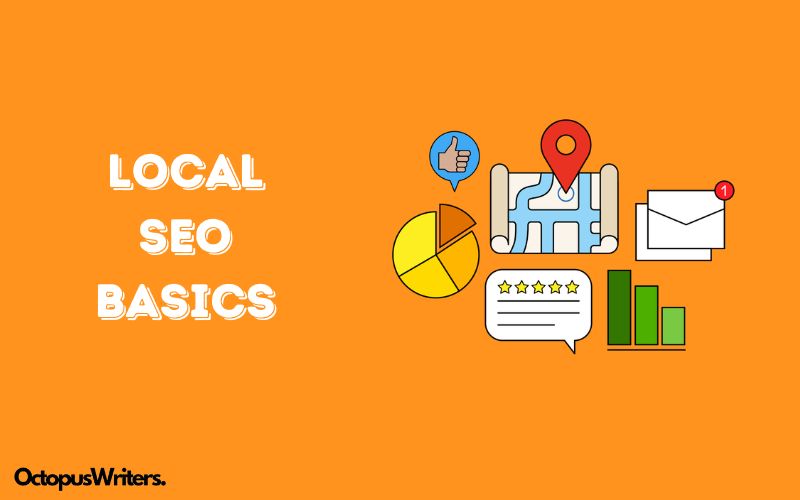
Is Local SEO useful for SEO optimization?
Create a Google Business Profile
A crucial element in SEO Basics for local SEO is creating and optimizing your Google Business Profile. Google pulls information from this profile to display local businesses in search results, such as the local pack.
To increase your chances of ranking higher than competitors, ensure your profile is optimized with the following:
- Business Details: Provide a clear and concise business description, including your phone number, address, hours of operation, and website link. This ensures potential customers can easily access your information.
- Photos and Videos: Upload high-quality visuals that represent your business, products, or services.
- Services: Highlight specific services or products your business offers. This improves visibility for local searches focused on those offerings.
- Customer Reviews: Encourage satisfied customers to leave positive reviews and respond to all reviews to show you value feedback and are committed to improving.
Also, consistency is key when listing your business name, address, and phone number (NAP). Matching these details across all online listings is a critical SEO Basics signal for local ranking.
Create Location Pages
For businesses that serve multiple locations, it’s a good idea to create dedicated location pages, a fundamental practice in SEO Basics for local optimization. These pages help search engines understand where your business operates and make it easier for local customers to find you.
For example, Wasson Nursery has separate pages for each location in Indiana. Each page includes location-specific details like the address, contact information, and targeted keywords such as “Muncie garden center.”
By following these SEO Basics for local SEO, you can enhance your business’s visibility in local search results, helping attract more customers from your target geographic areas.
What are the benefits of SEO Basics?
The benefits of SEO (Search Engine Optimization) are vast, making it a key component of any successful digital marketing strategy. Here are some of the main advantages:
Boosts Organic Traffic
One of the fundamental SEO Basics is improving your website’s rankings in search engines, which results in more organic traffic. This traffic comes from users actively searching for products or services like yours, making it more likely to convert compared to traffic from paid ads or social media.
Cost-Effective Strategy
Unlike paid advertising that requires continuous investment, SEO is a long-term strategy. Once you’ve optimized your site for the right keywords, it can drive traffic without ongoing financial input. This is why understanding SEO Basics is crucial for long-term growth.
Enhances Credibility and Trust
Websites that rank on the first page of search engine results are often seen as more credible and trustworthy by users. By following SEO Basics, like optimizing your content and building authority, you’ll naturally attract more traffic and build a reputation for trustworthiness.
Improves User Experience
A key aspect of SEO Basics involves improving your website’s structure, mobile responsiveness, and loading speed. This creates a better experience for users, which leads to longer engagement and lower bounce rates—factors that contribute to better SEO performance.
Higher Return on Investment (ROI)
Since SEO focuses on users actively looking for your products or services, the ROI is often higher than other marketing efforts. By targeting qualified leads, SEO increases the likelihood of conversions, making it one of the most efficient strategies.
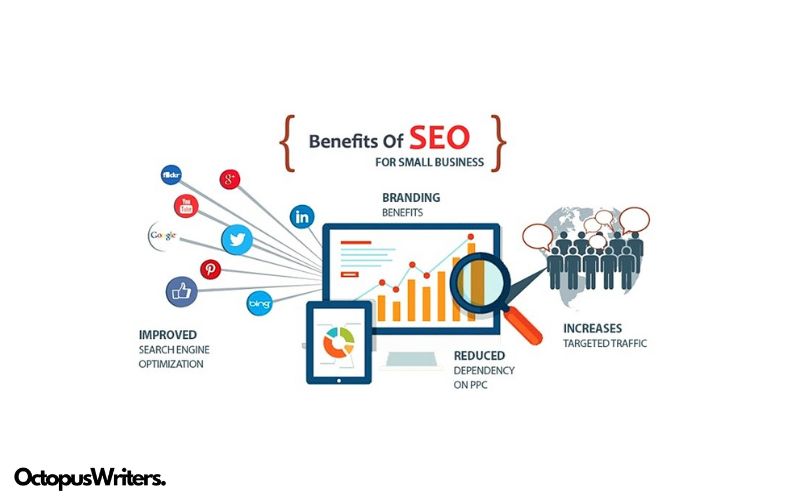
What are the benefits of doing SEO properly?
Gives a Competitive Edge
A well-executed SEO Basics strategy can give you a competitive advantage. By outranking competitors in search results, you can capture more traffic and potential customers, putting your business ahead in the marketplace.
Provides Measurable Results
One of the benefits of SEO Basics is that it offers measurable outcomes. Using tools like Google Analytics, you can track metrics like organic traffic, keyword performance, and conversion rates, giving you clear insights into your strategy’s effectiveness.
Local SEO Increases Engagement and Sales
For businesses with physical locations, local SEO is a crucial part of SEO Basics. Optimizing for local searches ensures that your business is visible to nearby customers, increasing foot traffic and sales opportunities.
Supports Long-Term Growth
SEO is not a short-term effort—it builds sustainable growth over time. By continuously optimizing and refining your strategy based on SEO Basics, your site’s rankings will improve, leading to steady traffic and lead generation without relying solely on short-term campaigns.
Increases Click-Through Rate (CTR)
Optimized meta titles and descriptions are another important element of SEO Basics. These improvements can increase your click-through rate, signaling to search engines that your page is valuable, which further enhances your rankings.
By mastering these SEO Basics, you’ll not only enhance your website’s visibility but also position your business for long-term success.
Common SEO Mistakes to Avoid
Avoiding these typical pitfalls is essential for maintaining a strong SEO Basics strategy and ensuring your website performs well in search engine rankings:
Overusing Keywords (Keyword Stuffing)
One of the most common errors is overloading a page with keywords in an unnatural way. While incorporating keywords is a key element of SEO Basics, excessive use can result in penalties from search engines. Instead, prioritize user experience by creating content that reads naturally, with keywords smoothly integrated into the text.
Neglecting Mobile Optimization
As most searches now occur on mobile devices, neglecting mobile optimization can lead to significant drops in both traffic and rankings. Part of mastering SEO Basics involves ensuring your site is mobile-responsive, quick to load, and offers a seamless experience across all devices.

SEO Basics don’t forget Mobile Optimization
Ignoring Meta Tags and Descriptions
Meta titles and descriptions are critical for both SEO and improving click-through rates (CTR). Ignoring these can damage your rankings and reduce user engagement. A core part of SEO Basics is crafting keyword-optimized, compelling meta tags for every page to attract more clicks.
Focusing on Quantity Over Quality in Link Building
Some sites mistakenly pursue as many backlinks as possible, without considering their quality. However, SEO Basics emphasize that search engines favor high-quality, relevant backlinks from reputable sources. Fewer, higher-quality links are far more effective than many low-quality ones, which could even result in penalties.
Failing to Update Outdated Content
Search engines prefer content that is fresh and relevant. If your website features outdated content that no longer provides value, it can negatively impact your rankings. Part of following SEO Basics is regularly updating older posts with new data, updated links, and relevant information to keep them useful and SEO-friendly.
By steering clear of these mistakes, you’ll maintain a more effective SEO Basics strategy, ensuring your website ranks well and attracts meaningful traffic.
The Future of SEO
As technology and user behaviors evolve, the future of SEO is shaped by emerging trends that emphasize user experience and advanced search methods.

What to do in the future for better SEO campaigns?
Voice Search and Its Growing Importance
With the rise of digital assistants like Google Assistant, Siri, and Alexa, voice search is becoming more popular. Optimizing content for voice search involves focusing on conversational keywords and answering specific user questions. As more people use voice search, this will become a critical part of SEO strategies.
AI and Machine Learning in SEO (Google RankBrain)
AI-powered algorithms like Google RankBrain are becoming increasingly important. RankBrain helps Google understand search queries by learning from user behavior, such as how people interact with search results. This means SEO is becoming more focused on user intent, so optimizing for user experience and relevance is essential.
Video SEO: Optimizing for Video Search Engines
Video content is growing rapidly, and search engines are placing more emphasis on video in their results. To optimize for video SEO, ensure your videos are properly titled, include keywords in descriptions and tags, and provide engaging thumbnails. Platforms like YouTube are becoming search engines in their own right, making video content a valuable asset for SEO.
The Role of User Experience (UX) in SEO Ranking
User experience has become a key ranking factor. Core Web Vitals (a set of metrics related to site speed, responsiveness, and visual stability) are used by Google to determine how user-friendly a site is. Websites that load quickly, are easy to navigate, and provide valuable content will rank higher in search results.
SEO Basics – Frequently Asked Questions

FAQs for SEO basics
How Does SEO Work?
Search Engine Optimization (SEO) works by improving a website’s visibility in search engine results pages (SERPs) through various strategies and techniques. Here’s a simplified breakdown of how SEO operates:
- Crawling: Search engines use bots (or spiders) to discover new and updated pages on the web by following links from other pages.
- Indexing: After crawling, search engines analyze the content of the pages and store this information in their index, which is a massive database of web content.
- Ranking: When a user performs a search, search engines use complex algorithms to determine the most relevant results from their index based on factors such as keyword relevance, content quality, user experience, and the authority of the website.
- Search Results: The search engine presents the ranked pages in the SERPs, with the highest-ranked pages appearing first. The goal of SEO is to optimize your website to rank higher in these results for targeted keywords.
What SEO Experience Do I Need to Know the Basics?
To understand the basics of SEO, you don’t need extensive technical knowledge, but having familiarity with certain concepts can be beneficial:
Basic Understanding of How Search Engines Work: Know how search engines crawl, index, and rank websites.
- Keyword Research: Learn how to identify relevant keywords and phrases that potential customers might use to find your business.
- On-Page SEO: Familiarize yourself with on-page optimization techniques, such as optimizing title tags, meta descriptions, headers, and content.
- Content Creation: Understand the importance of creating high-quality, engaging, and relevant content that adds value to your audience.
- Link Building: Get to know the basics of acquiring backlinks from other reputable websites to boost your site’s authority.
- Analytics: Learn how to use tools like Google Analytics to track your website’s performance, traffic sources, and user behavior.
- User Experience: Recognize the importance of website speed, mobile-friendliness, and overall user experience as ranking factors.
What Are the Types of SEO?
SEO can be categorized into several types, each focusing on different aspects of optimization. Here are the main types of SEO:
- On-Page SEO: This involves optimizing individual web pages to rank higher and earn more relevant traffic. Key elements include content quality, keyword placement, meta tags, URL structure, and internal linking.
- Off-Page SEO: This refers to activities conducted outside your website to improve its authority and reputation. Key strategies include link building, social media marketing, and influencer outreach.
- Technical SEO: This focuses on improving the technical aspects of a website to enhance its performance and crawlability. This includes optimizing site speed, mobile responsiveness, site architecture, XML sitemaps, and fixing crawl errors.
- Local SEO: This targets local search queries to help businesses appear in location-based searches. It involves optimizing Google Business Profiles, managing local citations, and gathering customer reviews.
- E-commerce SEO: This is specific to online stores and focuses on optimizing product pages, category pages, and the overall user experience to increase visibility and sales.
- Content SEO: This involves creating high-quality, relevant content that aligns with user search intent and optimizing it for keywords to improve search rankings.
By understanding how SEO works, the necessary foundational experience, and the different types of SEO, you can develop effective strategies to enhance your website’s visibility and performance in search engines.
How long does it take to see results from SEO?
SEO is a long-term investment, and the time it takes to see noticeable results depends on several factors, including the competitiveness of your industry, the age and authority of your website, and the effort you put into optimizing your site.
- New Websites: It can take anywhere from 3 to 6 months for a new website to start seeing noticeable improvements in rankings and traffic. During this time, search engines are crawling and indexing the site, and it needs time to build authority.
- Existing Websites: If your website has been around for some time but lacks optimization, improvements can often be seen within 1 to 3 months after implementing effective SEO strategies like optimizing content, improving page speed, and building backlinks.
Remember, SEO is an ongoing process, and results will continue to improve over time as your content matures, gains authority, and ranks for more competitive keywords.
How often should I update my SEO strategy?
Your SEO strategy should be reviewed and updated regularly to stay competitive. Search engines like Google are constantly updating their algorithms, and your business needs to adapt to these changes to maintain or improve rankings.
- Minor Updates: It’s a good idea to review and make minor updates to your SEO strategy every 3 to 6 months. This could involve refreshing content, adjusting keywords, or fixing any technical issues that may have arisen.
- Major Updates: If there’s been a major algorithm change, it’s important to revisit your strategy immediately. Besides that, aim for a comprehensive review annually, where you analyze performance, trends, and new opportunities.
- Content Updates: Keep your content fresh by updating high-performing posts with new information, adding internal links, or enhancing it with new keywords every 6 months to 1 year
What are backlinks, and how do they affect SEO?
Backlinks are links from one website to another. They are a significant part of SEO because search engines view them as “votes of confidence” for your site’s authority and relevance.
Quality Over Quantity: Backlinks from reputable, high-authority websites can significantly boost your rankings, whereas links from low-quality or spammy websites can have a negative effect.
How They Affect SEO: When reputable sites link to your content, search engines like Google interpret this as a signal that your content is valuable and relevant, which helps improve your site’s visibility in search results. Additionally, backlinks can drive referral traffic to your website, enhancing your overall traffic growth.
Types of Backlinks:
- Natural Backlinks: These occur organically when other websites link to your content because they find it valuable.
- Manual Backlinks: These are links you acquire through outreach, guest blogging, or partnerships.
Why is mobile optimization important for SEO?
Mobile optimization is essential for SEO because search engines like Google use mobile-first indexing, which means they predominantly use the mobile version of your website to determine its rankings.
- Mobile Traffic: More than 50% of global website traffic comes from mobile devices. If your site is not mobile-friendly, users will have a poor experience, which can lead to higher bounce rates, negatively impacting your rankings.
- Google’s Mobile-First Indexing: Since 2018, Google has prioritized the mobile version of websites for ranking and indexing. This means that if your site isn’t optimized for mobile, it may not rank as well on search engine result pages (SERPs).
- Page Speed: Mobile users expect fast load times. A slow, unoptimized mobile site can frustrate users and lead to lower engagement, impacting your SEO performance.
- User Experience: A mobile-optimized site ensures that users can easily navigate, read, and interact with your content on smaller screens, improving their overall experience, which in turn boosts your SEO rankings.
Mobile optimization is no longer optional but a necessity to stay competitive in today’s SEO landscape.
Conclusion
Mastering SEO Basics is essential for any business looking to grow its online presence and drive organic traffic. By understanding the key principles of SEO, such as optimizing content, improving site performance, and building quality backlinks, you can set your website up for long-term success. At OctopusWriters, we are committed to helping businesses navigate the complexities of SEO with clear and actionable strategies. Whether you’re just starting out or refining your SEO efforts, focusing on these fundamentals will allow you to stay competitive and achieve sustained growth in the digital landscape.

